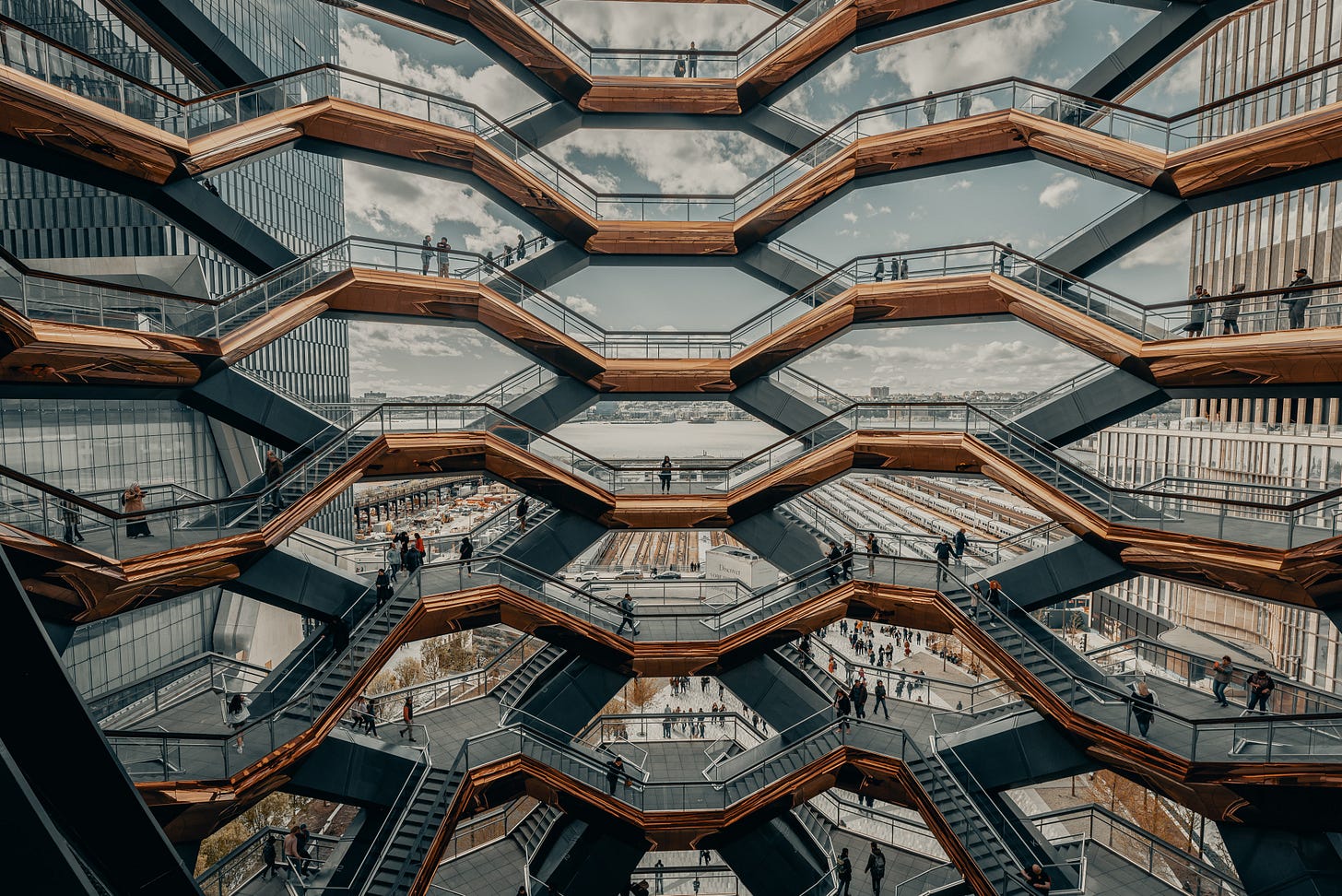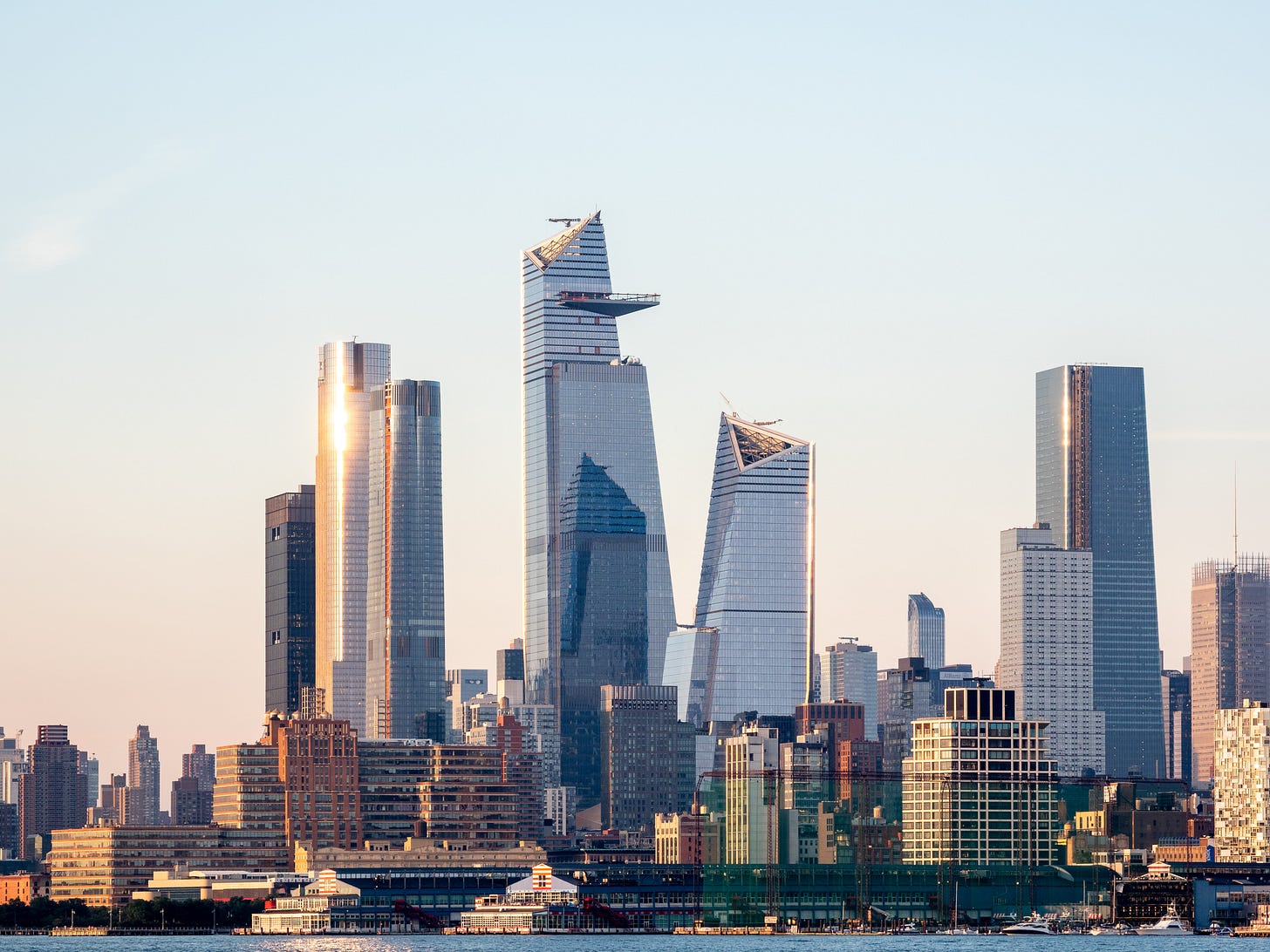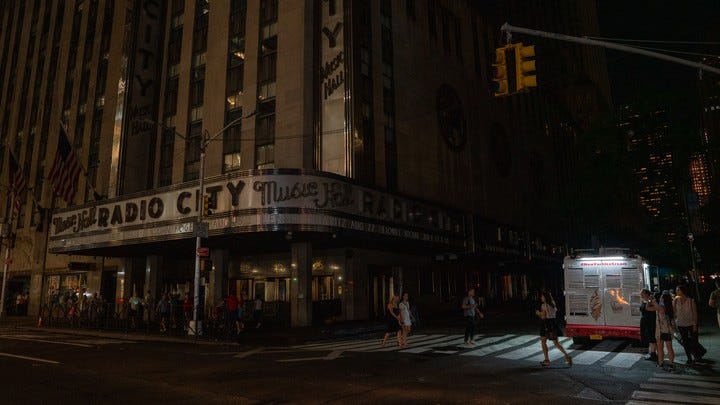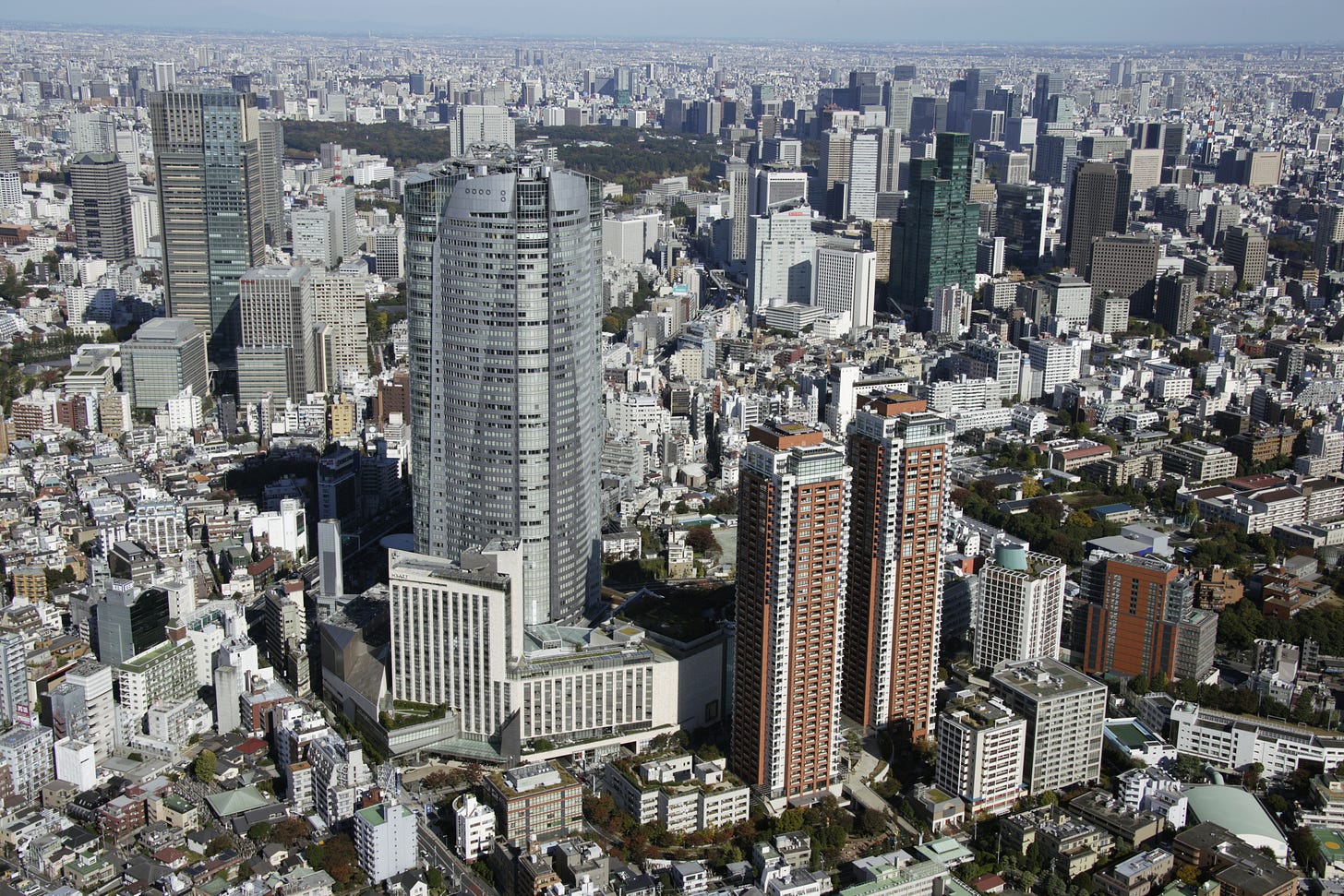The New Fortress Cities - Issue #8
Are we getting urban resilience wrong? From Tokyo to NYC, cities embrace mega urban developments that can withstand major threats, but only for the happy few.
🏙 Cities in Mind is your go-to destination to learn about cities, technology, innovation and the people behind them. All that through an Asian perspective.
About me: I am Fabien, an urban planner based in Singapore since 2015. I write this regular newsletter and host a podcast series, that you can find on Apple Podcasts or Spotify.
If you’re seeing this newsletter for the first time, feel free to sign up so you don’t miss the next issues and podcast episodes. You can also share Cities in Mind around you.
This week, we’ll discuss an important trend that sees cities around the world embracing mega private urban developments that can withstand major threats, such as power blackouts, natural disasters or even terrorist attacks.
They are, as I propose to call them, the new “fortress cities” 🏰 , “cities within cities”, designed in the name of resilience, sustainability and… exclusivity.
Thanks to recent technological breakthroughs, such as micro-energy grids, it is now possible to build urban neighbourhoods as “islands” and provide a safe, green and disaster-proofed environment to some happy few urbanites or high-paying global companies.
Is it what urban resilience is about or are we following a misleading path? 🤔
🗽 The Hype of Fortress Cities
What sparked my interest on this topic is the heated debate about one of New York City’s most recent developments, Hudson Yards.
Hudson Yards is an 11ha real estate development located on the West Side of Manhattan, along the Hudson River.
💸 The most expensive real estate development in US history, with a price tag of $25 billion USD, Hudson Yards is the brainchild of Stephen Ross, an American real estate developer whose portfolio includes landmarks such as the Time Warner Center.
The development has attracted an impressive line-up of companies, including HBO, CNN, L'Oréal USA, BlackRock and soon Facebook.
Hudson Yards mostly caters to the one-percenters and its accumulation of luxury glass towers (despite NYC’s Mayor Bill de Blasio’s plan to ban skyscrapers as part of the Green New Deal) has been widely criticised. There was even a plan (which has been scrapped since) to build a giant wall dividing Hudson Yards from the popular neighbouring High Line. Yes, a giant wall..
Hudson Yards is in fact the ultimate fortress built to survive in the event of hurricanes, floods, or terrorist attacks.
Recalling the 9/11 attacks, the developers have focused their efforts on mitigating potential acts of terrorism. They consulted with many high-profile security experts to prepare for potential active shooters or truck bombs.
🌊 The site is also prepared for the looming threat of natural disasters. Hudson Yards is a riverside development, located along NYC's 100-year flood plain, but the majority of buildings are raised about 12 meters above sea level. Some mechanical systems, such as elevator pits, have been sealed off by waterproof "submarine doors" and electrical systems have been moved above ground to protect them from water damage.
In 2012, Hurricane Sandy disrupted a third of NYC’s electrical capacity. Flooding shut down many transmission substations and other infrastructures, including natural gas and steam services (which provide heat and hot water, crucial during winter and for emergency facilities such as hospitals).
Beyond hurricanes, New York City is very vulnerable to massive power outages. Remember the summer 2019 Black Out, caused by issues on a local transformer? The episode has shed light on how deferred maintenance, higher demand, climate-change-driven weather disasters and potential cyberattack threats put NYC’s infrastructure at greater risk.
⚡️ In the event of massive power outage, micro-turbines at Hudson Yards can heat and cool the buildings, allowing the development to survive “independently” of the city's infrastructure. This is often referred to as living "off the grid”, even if the concept is somewhat misleading. The idea of having auxiliary on-site power to support business continuity during a blackout was actually both a priority and a point of differentiation for Hudson Yards.
Hudson Yards sets the standards in many ways. But let’s not get fooled. There’s no such thing as being completely off-grid or creating a “safe haven” to all kind of disasters (what about food? health? urban logistics? other basic goods and services?).
Billy Grayson, Executive Director of the Urban Land Institute's Center for Sustainability and Economic Performance, summarised it well:
"No building is off-grid because every building needs roads to bring people to it. If the city is not making the right investments in resilient infrastructure, even if the buildings can run perfectly, it's still not going to save them from those extreme weather events."
“Even if I have a beautiful condo. I don’t want to be stuck in it for a month while they’re trying to dig out the subway or rebuild the roads that connected me to the rest of Manhattan.”
And if you were not already convinced, Hudson Yards still does not have a local fire station..
🗼Where did the trend start?
An important inspiration behind Hudson Yards actually comes straight from Asia.
In the early 2000s, Tokyo set the example for this integrated “city-in-a-city approach”, with Roppongi Hills.
In 1986, Minoru Mori, one of Japan's most powerful and influential real estate tycoons, gained permission from the Tokyo prefectural government to redevelop Roppongi, which used to be a not-so-respectable neighbourhood, famous for bars and discos frequented by foreign residents.
Roppongi Hills soon became the biggest private development in the city’s history.
Completed in 2003, it combines modern city life with suburban elements to create a self-sufficient and disaster-proof community. At the time, it was hailed as a technological wonder and a perfect mix of residential, commercial, leisure and retail functions.
🌳 A quarter of the complex’s total footprint is made up of parks, and all the buildings’ roofs have vegetable gardens, something not so common in Tokyo. Consequently, the average outdoor temperature within Roppongi is 2-to-3 degrees cooler than that of the surrounding neighbourhoods, thus addressing the urban heat island effect, a topic we discussed last week in our Podcast Episode 07 Cooling Cities.
⚡️ The development also has its own gas turbine that reduces energy usage by 20%. It is self-sufficient in the event of power outages and there are 13 rainwater collection points. Waste water is even purified and reused within the development. All refuse is recycled, and solar panels provide lighting, with the energy surplus stored in batteries. Sounds impressive, right?
Following the 2011 great earthquake of East Japan (and subsequent nuclear disaster), Roppongi started to garner a lot of attention for its energy self-sufficiency and its immunity to potential blackouts.
The development has set an example that has been followed throughout the city as developers rush to build new high-rise towers that are self-contained, self-sufficient and state-of-the-art in terms of withstanding risks and disasters.
In the context of the 2021 Olympics, this is something that the city of Tokyo has been actively promoting internationally, together with a shift towards a more environmental-aware society. Nice on paper but many critics have said that there has been more talk than action.
💸 Similarly to Hudson Yards, Roppongi Hills has become identified with Japan’s version of the 1%. High-profile IT and finance companies moved into its office spaces and some of the wealthiest people in the country have bought properties in the neighbourhood. The rise and fall of the “Hills Tribe”, as Tokyoites call Roppongi’s high-profile residents, has been largely documented in the media, somehow worsening the perception of the country’s wealth gap.
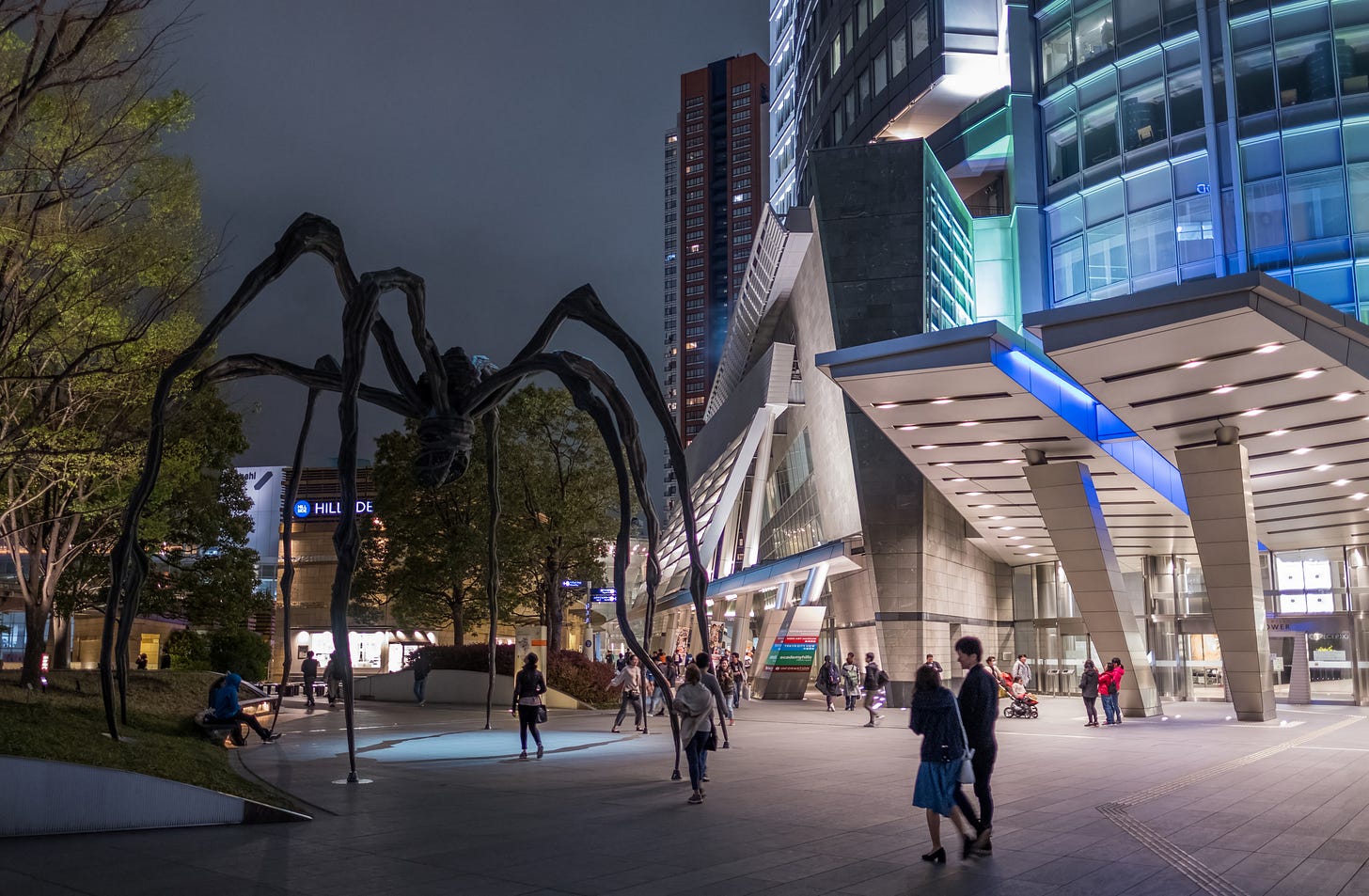
A decade before the start of Hudson Yards, Roppongi came up with the ingredients of the perfect fortress city and also brought to the fore its pitfalls: social enclave, hyper-reliance on technologies, disconnection from the rest of the urban fabric, financing issues..
Resilience vs neo-medievalism
Beyond their controversies, I believe those developments are worth analysing closely, as they reveal our struggles to think and deliver urban resilience.
My 3 main take-aways:
If some neighbourhoods turn into exclusive islands, what’s for the rest of the ocean? Self-contained towns are not inherently bad. They are a favoured approach in many regions and future-proofing them is important. We should simply remember that they are part of a larger system.
We must be cautioned against viewing those development as safe havens from climate change, natural disasters or other security threats. Cities are vulnerable in their entirety and the push towards tech-powered gated communities only gives the illusion that the problem can be fixed through simple solutions.
A path towards systemic change is critical when it comes to building resilience. Pilot neighbourhoods could be used as stepping stones to test (and then scale up) new approaches and technologies. The challenge would be to ensure such approaches spill their benefits over the rest of the city and also to learn from their successes or failures.
Don’t get me wrong, Fortress Cities are not Bunker Towns, or some kind of survivalist urban fantasies, such as the ones we’re seeing since the pandemic. COVID-19 is fuelling a boom in the doomsday bunker market, thanks to some dubious marketing claims
Yet, they don’t deliver on what we should expect from a resilient, balanced and just city. The journey towards this will be long so let’s not be misguided.
📝 What caught my interest this week
Google introduces its Mass Timber Buildings - a factory-based approach to fabricating mass timber buildings.
Deepfake Maps Could Really Mess With Your Sense of the World - such imagery could mislead governments or spread misinformation more quickly.
Make Way for the ‘One-Minute City’ - Sweden’s initiative that allows local communities to become co-architects of their own streets’ layouts.
A nice newsletter on urban technology from Bryan Boyer, Director of the Urban Technology undergrad programme at the University of Michigan. Interesting comparison between urbanists and technologists.
Creator Towns - imagine growing small towns by leveraging the digital economy. Thanks Noémie from La Mutante for pointing this.
Airbnb hits back and wants you “to try out a new city” before moving there Airbnb thinks remote work will change travel forever
💡 And also
Our coverage of Singapore’s and South Korea’s green recovery efforts shared in nextrends Asia, a newsletter from the Swiss global innovation network in Asia
That’s it for today. As usual, a small 🧡 at the bottom of the article goes a long way !
Thanks for your support and see you next week for a new podcast episode. Stay tuned!




